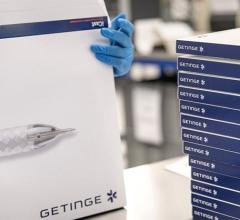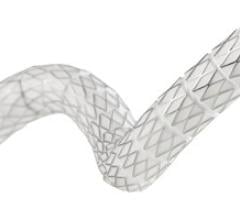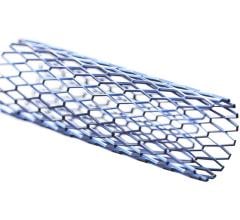December 27, 2007 - Several new studies on genetics and stem cell research, along with studies that continue to debate the use of stents to clear coronary artery blockages are among the top research advances in heart disease and stroke for 2007, said Daniel W. Jones, M.D., president of the American Heart Association.
Other major milestones include a study that may change the way lives are saved using a new way to do cardiopulmonary resuscitation.
The American Heart Association in 1996 began compiling an annual list of the top 10 major advances in heart disease and stroke research and continues to highlight influential research annually.
Achievements in 2007 include:
1. Genome-wide association study of 14,000 cases of seven common diseases and 3,000 shared controls
Genome wide association studies identify genes (strands of DNA) which may cause specific diseases and represent a powerful approach in identifying genes involved in common human diseases. This large-scale genome-wide association (GWA) study found consistent and replicable genetic markers of several complex diseases of adulthood, including atherosclerotic heart disease. Study authors said their analysis of some 17,000 people for seven common familial diseases (bipolar disorder, coronary artery disease, Crohn's disease, hypertension, rheumatoid arthritis, type 1 diabetes and type 2 diabetes) confirms previously identified loci (DNA closely linked to genes that may identify a trait of a particular disease) and provides strong evidence for many novel disease susceptibility genes.
Source: Nature, June 7, 2007; Nature 2007. 447:661-78; http://www.nature.com/.
Funding: Wellcome Trust was the principle funding source of this study.
2. Genomewide association analysis of coronary artery disease
This study included a joint analysis of two genomewide association studies of coronary artery disease. Researchers used the genetic patterns of the persons (cases) with coronary artery disease (CAD) from the Wellcome Trust Case Control Consortium study (described above) and tried to replicate the genetic patterning for CAD in another genomewide association study - the German MI [Myocardial Infarction] Family Study. Results identified several genetic loci that, individually and in aggregate, substantially affect the risk of developing coronary artery disease.
Source: New England Journal of Medicine, Aug. 2, 2007; N Engl J Med 2007. 357:443-453; http://www.nejm.org/.
Funding: Grants from the Wellcome Trust, the National Genome Research Network 2 of the German Federal Ministry of Education and Research and the Cardiogenics project of the European Union supported this study.
3. Cardiopulmonary resuscitation by bystanders with chest compression only (SOS-Kanto): an observational study
This work represents the first meaningful chance to improve cardiopulmonary resuscitation (CPR) in more than 50 years. Results indicate chest compression-only resuscitation by bystanders may be the preferable approach to resuscitation for adult patients with witnessed out-of-hospital cardiac arrest, especially those with apnea, shockable rhythm or short periods of untreated arrest.
Source: The Lancet, March 17, 2007. The Lancet 2007; 369:920-926; http://www.thelancet.com/.
Funding: Grants from the Laerdal Foundation of Acute Medicine, Norway and the Ministry for Health, Labour and Welfare, Japan supported this study.
4. Implementation of a statewide system for coronary reperfusion
This study found that a statewide program focused on regional systems for quickly treating ST-elevation myocardial infarctions (STEMI - heart attacks in which the coronary artery is completely blocked) can significantly improve quality of care. The research sets the stage for collaborative, non-competitive care for patients of a region, expanding door-to-balloon initiatives into the community for a systems approach. The American Heart Association's Mission: Lifeline program, created to establish systems to provide emergency care for STEMI patients, promotes this strategy for improving patient care.
Source: Journal of the American Medical Association, Nov. 28, 2007; JAMA 2007; 298(20);2371-23809; http://www.jama.org/. This study was also presented at the American Heart Association Scientific Sessions 2007.
Funding: Blue Cross and Blue Shield of North Carolina supported this study.
5. Long term effects of dietary sodium reduction on cardiovascular disease outcomes: observational follow-up of the trials of hypertension prevention (TOHP)
This is the first major trial to document that a reduced sodium intake lowers the risk of clinical cardiovascular disease outcomes, not just blood pressure.
Source: British Medical Journal, April 20, 2007; BMJ 2007;334;885; http://www.bmj.com/.
Funding: The National Heart, Lung and Blood Institute, National Institutes of Health supported this study.
6. Optimal medical therapy with or without PCI for stable coronary artery disease (COURAGE)
This study compared the initial management strategy of percutaneous coronary intervention (PCI) with intensive pharmacologic therapy and lifestyle intervention (optimal medical therapy) vs. optimal medical therapy alone in reducing the risk of cardiovascular events. The authors concluded that, as an initial management strategy in patients with stable coronary artery disease, PCI did not reduce the risk of death, myocardial infarction or other major cardiovascular events when added to optimal medical therapy.
Source: New England Journal of Medicine, April 12, 2007; N Engl J Med 2007; 35;(15);1503-16; http://www.nejm.org/. .
Funding: The U.S. Department of Veterans Affairs Office of Research and Development provided support for this study.
7. Generation of functional cardiomyocytes from adult mouse spermatogonial stem cells
This study analyzed the complex functional properties of cardiomyocytes (heart muscle cells) derived from maGSCs in vitro and the behavior of undifferentiated maGSCs in normal hearts of mice in vivo after transplantation. The authors conclude that maGSCs provide a new source of distinct types of cardiomyocytes for basic research/potential therapeutic application.
Source: Circulation Research, June 8, 2007; Circ Res. 07 Jun 8;100(11):1615-25; http://www.ahajournals.org/.
Funding: A grant from the Georg-August-University of Go¨ttingen supported this study.
8. HORIZONS: Harmonizing Outcomes with RevascularIZatiON and Stents
This large study examined the safety and effectiveness of anticoagulation medications and drug-eluting stents in patients experiencing a STEMI heart attack, in which the coronary artery is completely blocked, without significantly increasing the rate of death or recurrent heart attacks among these patients.
Source: Late-breaking trial at the Transcatheter Cardiovascular Therapeutics TCT 2007; http://www.tct2007.com/.
Funding: The Cardiovascular Research Foundation supported this study.
9. Effectiveness and safety of drug-eluting stents in Ontario
This large Canadian study found that drug-eluting stents are effective in reducing the need for target-vessel coronary artery bypass in patients at the highest risk for re-narrowing of previously blocked arteries, without a significantly increased rate of death or heart attack.
Source: New England Journal of Medicine, Oct. 7, 2007; N Eng J Med 2007; 14;357:1393-1402; http://www.nejm.org/.
Funding: The Ontario Ministry of Health and Long-Term Care to the Program for Assessment of Technology in Health, the CCN of Ontario and the Institute for Clinical Evaluative Sciences supported this study in part.
10. Underdiagnosis of Hypertension in Children and Adolescents
This study of more than 14,000 children found that hypertension and prehypertension were often undiagnosed in the pediatric population. Patient age, height, obesity-related diagnoses and magnitude and frequency of abnormal blood pressure readings all increased the odds of hypertension.
Journal of the American Medical Association, Aug. 22, 2007, JAMA 2007, 298(8):874 ?” 879; http://www.jama.org/


 April 17, 2024
April 17, 2024 








